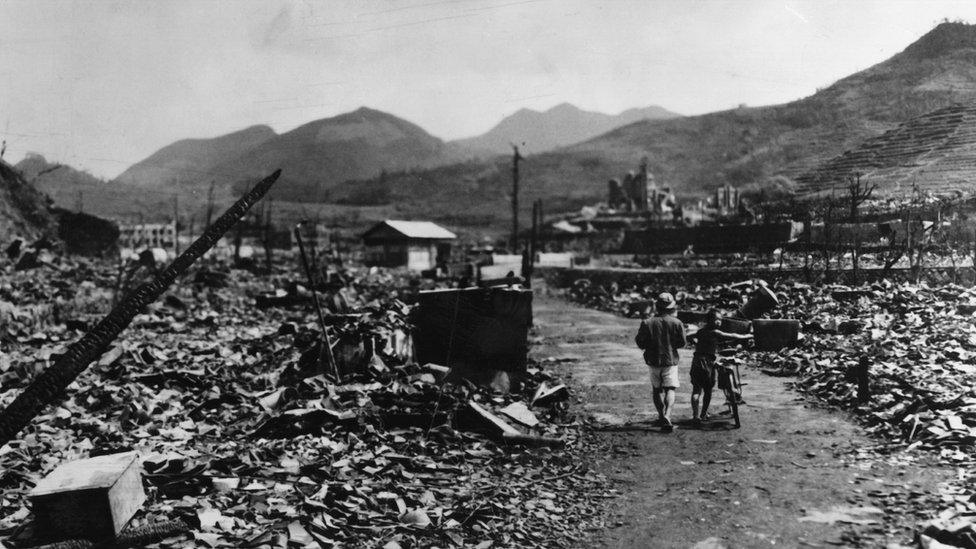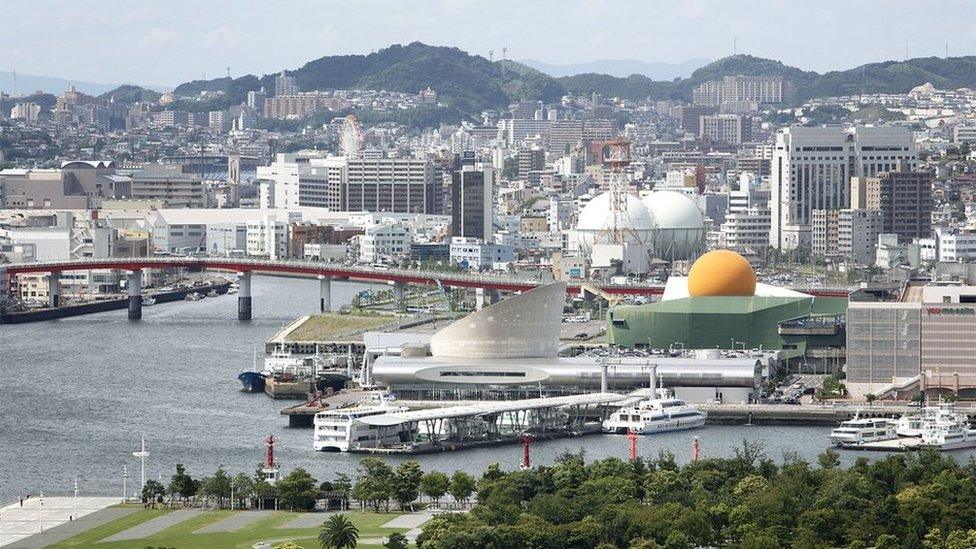Virtual reality journey explores atom bomb-hit Nagasaki
- Published

At least 74,000 people died either in the blast or from subsequent injuries
Japanese schoolchildren are using virtual reality to experience the destruction caused when an atomic bomb was dropped on Nagasaki during World War Two.
A 3D computer model of the devastated city has been developed by Nagasaki University with the help of archive photographs, and allows users to explore a 500m (1640 ft) radius around the bomb's hypocentre, The Mainichi newspaper reports, external. A class of primary school children were the first to try it out, and they didn't just get a visual experience - there's also the sound of footsteps on rubble and wind blowing through the ruins, the paper says.
The United States bombed Nagasaki with the "Fat Man" plutonium-based weapon on 9 August 1945, three days after Hiroshima. Japan surrendered six days later.
The model requires users to first walk around modern-day Nagasaki with a tablet computer, and their route is logged using GPS. That same journey is then recreated in virtual reality, so people can simply don 3D glasses to see what their journey would have looked like in the aftermath of the bomb.
Prof Takashi Fujiki, who specialises in educational engineering, says the passage of time means some people find it difficult to relate the modern city of Nagasaki to the devastation wrought by the bomb. He tells The Mainichi: "By walking the area oneself and comparing then and now, the two are connected and one can better understand the damage."

Users can also snap a photo in modern-day Nagasaki and see how that spot looked after the atomic bomb
Next story: News channel uses mime in media freedom debate
Use #NewsfromElsewhere to stay up-to-date with our reports via Twitter, external.